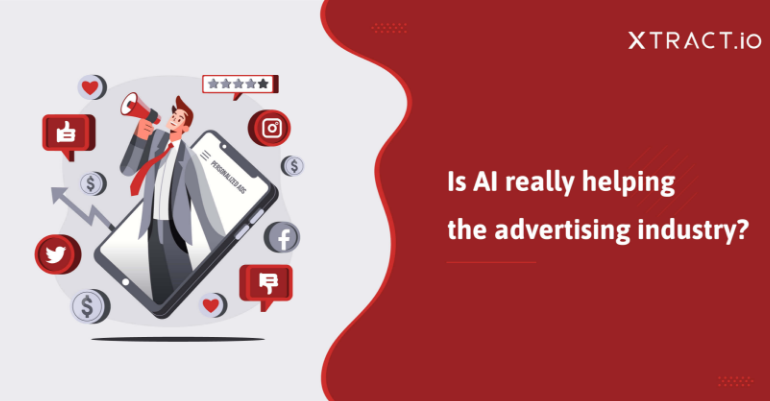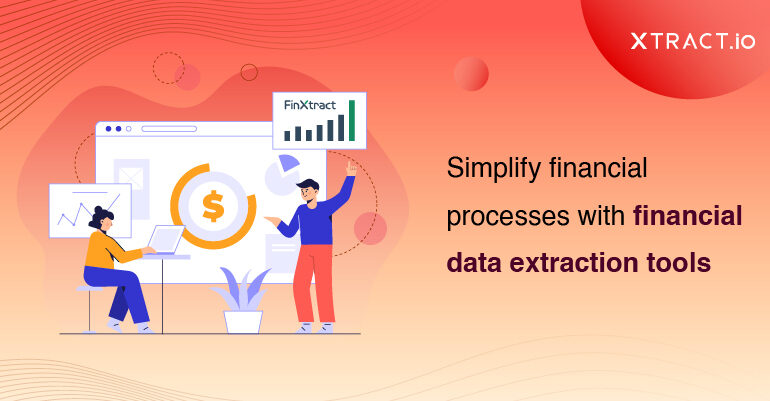Advertising is a very powerful tool. More than people give it credit. Advertising has the power to spread awareness, the ability to set objectives, to influence, convey information, and most important of all, the power to convince. Take, for example, brands like BMW, Mercedes, Apple, Nike. All these brands are recognized even in the remotest parts of the world. And the credit goes to their strong marketing strategies.
Digital advances have led the advertising industry to progress from traditional media platforms to online digital platforms. And today, the global advertising industry is worth $766 Bn, expected to reach $1 trillion by 2025. Technological advancements also introduced Artificial Intelligence (AI) to the world. Currently, AI is used in almost every industry including advertising.
How do companies like BMW, Mercedes, Apple, Nike know what appeals most to their customers? What story to tell with each advertisement? What will persuade their customers? No doubt, these brands stand tall due to their excellent product quality, impeccable service, and value. But, if it weren’t for great storytelling, the product features and service would be no-good. AI helps advertisers understand their audience better, telling them what appeals to the customers and drives them to purchase the product.
Before digging into the applications of AI in advertising, let’s understand what AI is and how it works.
Everything you need to know about AI in advertising
AI in advertising is transforming the industry at a rapid pace. Because of AI, customers are receiving personalized ads while browsing. There are AI chatbots assisting customers with purchasing decisions. So, how exactly does AI help?
Artificial intelligence duplicates humans’ problem-solving and decision-making capabilities by leveraging computers and machines. It uses historical data to help analyze past experiences and learn from them to make better and wiser decisions. Today, advertisers use AI to deliver more personalized and impactful experiences, identify and target the right audience, choose the right influencers to represent the brand, and, more importantly, make correct decisions faster.
A 2020 Statista report states that in a survey conducted among marketers across the globe, 41% of marketers observed an increase in revenue growth and performance after implementing AI for marketing campaigns.
Advertising companies that use AI are able to drive actual results targeting niche populations and getting suitable ads to the relevant people. On the other hand, advertisers that continue to follow a more traditional path face difficulties grabbing the right audience’s attention.
Challenges faced by the advertising industry
The advertising industry is highly competitive. Not just because of the growing competition with smarter players entering the market, but also because humans keep evolving, and so do the details that seize their attention. In the recent past, there have been brands whose advertisements failed miserably and hurt people’s sentiments.
Dove Body Lotion Ad – October 2017
A brand that claimed to celebrate the beauty of diversity failed big time to do so when it released a 3-second Facebook video ad. The ad showed a woman of color turning white. Dove immediately removed the ad from Facebook and apologized for the unintentional offense caused.
H&M – January 2018
H&M became the center of racist misconduct when the brand decided to print a sweatshirt with “coolest monkey in the jungle” written over it and showcase it the way they did. The global clothing brand pulled out the image from its website and apologized, saying it believes in diversity and inclusion.
Apart from the obvious reasons why these advertisements failed to interact with people, why do you think these campaigns were unsuccessful? When brands promote their products, they need to know everything about the market. And that’s as backbreaking as it sounds. Some common challenges for advertisers include the following.
Successfully reaching the right audience
The whole point of advertising is to appeal to the target audience, with the correct message, at the right time. But, reaching the right audience is a strenuous task. David Ogilvy, renowned as the father of advertising, believed that successful advertising for any product is rooted in its customer’s information.
Today, the audience, in general, is quite elusive. Consumers are busier than ever. They have to work more than the generation before them while still not having as much disposable income. With such a demanding schedule, the internet has only made it worse for them by grabbing their attention in multiple directions.
Now that the audiences’ have a comparatively smaller attention span, brands fight hard to appeal to their target audience.
Constantly changing digital landscape
It is challenging for advertisers to decide where to place their ads due to the increase in online digital platforms. Advertisers today have to find suitable online marketing platforms and devise advertising strategies correspondingly. With the increasing number of smart devices, personal assistants, virtual reality, and augmented reality, the internet is becoming more complex. Finding these new options for digital marketing and creating strategies to use them optimally is yet another challenge.
Advertisers can easily reach the target audience if they use tools that help them optimize their advertising campaigns and showcase these ads on the right platform.
Increasing digital exposure and engagement
Social media was a blessing for advertisers until they stopped using their platform to display free ads. Because social media has gained such popularity, these tech giants do everything to monetize their sites.
The current situation is brands cannot even get their page followers to see their posts. Advertisers have to pay social media sites to make the ads visible to the target audience. And this costs them a bomb. While there is no way out of this for advertisers, what can be possibly done is that they can make the most out of these sites in terms of promoting their brand.
How can AI help?
The applications of AI in advertising will keep expanding as the world gets more and more digitized, creating more and more avenues for advertisers to leverage new technologies. So far, we have seen AI helping the advertising industry in several ways.
Personalized ads
Today, advertisers are forced to spend a lot of money digitally engaging customers due to the growing competition. This has made it difficult for advertisers to introduce new ways to grow profits. On the other hand, customers demand shopping experiences that strictly cater to their needs.
Brands can address both challenges through personalization. A study shows that 57% of customers would click on a standard ad by a known brand. But, 70% would click personalized ads. A growing number of consumers feel that if the ads are aligned with their past purchases or shopping trends and delivered at the right time, they are more likely to click through.
AI-powered solutions are helping advertisers understand their customers at a micro level, allowing them to address audience needs through tailored marketing campaigns.
Customer segmentation
Machine learning in AI is helping advertisers identify patterns based on consumer behavior and message resonance. AI-backed intelligent solutions consider all the audience information, including demographics like location, education, employment, and income. Based on such insights, advertisers can easily understand what each niche target segment wants to see or hear and when.
Segmenting the market into smaller groups and pitching them relevant messaging has improved customer engagement and conversions. Such solutions provide a unified yet comprehensive view of audience behavior and reactions, enabling you to shape your brand and marketing strategy accordingly.
Increased ROI
Advertisers need to follow an analytical approach to advertising if they really want to connect with their audience. Any AI-powered solution or tool will ingest a massive amount of data to forecast future trends with the highest level of accuracy. Most people aren’t very welcoming when it comes to AI. But, many think that it’s one of the most significant technological leaps humans have ever taken. And I agree. Artificial intelligence is amazing because it keeps getting better and better, kind of like us. It constantly keeps learning and adapting as required, assisting us humans in making the right decisions.
For a long time, advertisers struggled with measuring the success of their ad campaigns. Here, analytics has helped them understand what appeals to their audience and what does not. This helps advertisers save a lot of money as they only have to spend their money on ads that they know will work. If you know the right target audience and the right message to get across, you can increase your ROI.
Ready to make your ads more impactful?
Advertisements are like the first impression of your product or brand. Of course, you can get a do-over for your failed campaigns, but you would have already lost audience interest and money by then. And since time is of the essence for everyone today, especially your customers, give them what they want to know about your brand.
Xtract.io caters to different niche requirements and offers you accurate information instantly. If you would like to know more, contact us, and we would be delighted to help you achieve your business goals.








1 Comment
Hi, Neat post. There’s a problem together with your website in web
explorer, would test this? IE still is the marketplace leader and a huge part of other people will omit your wonderful writing because of this problem.